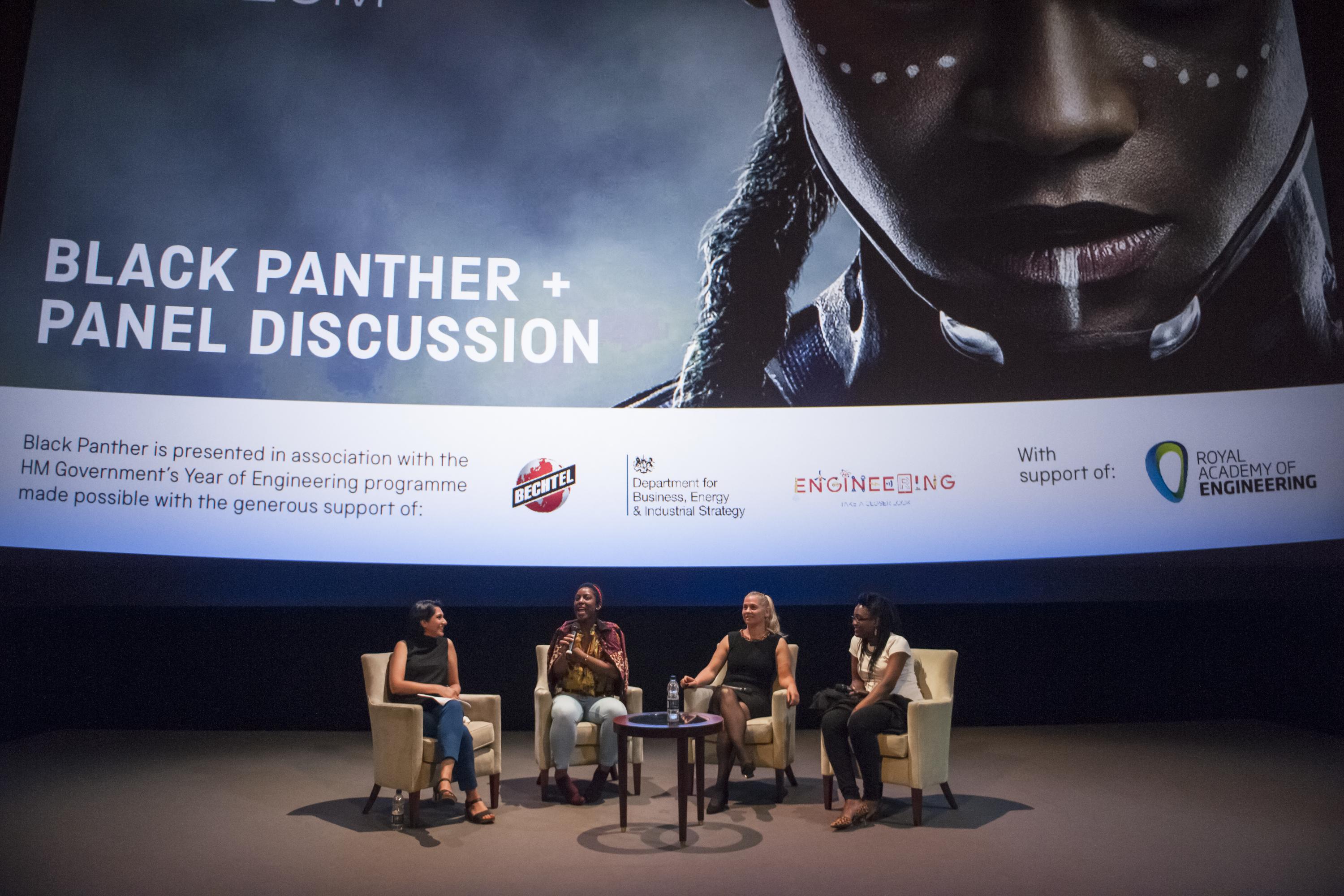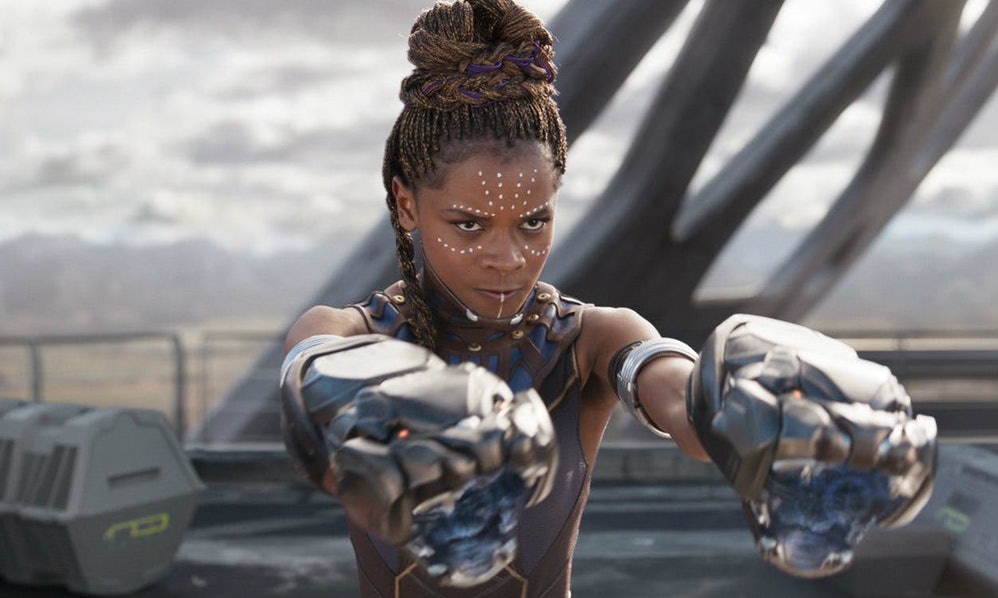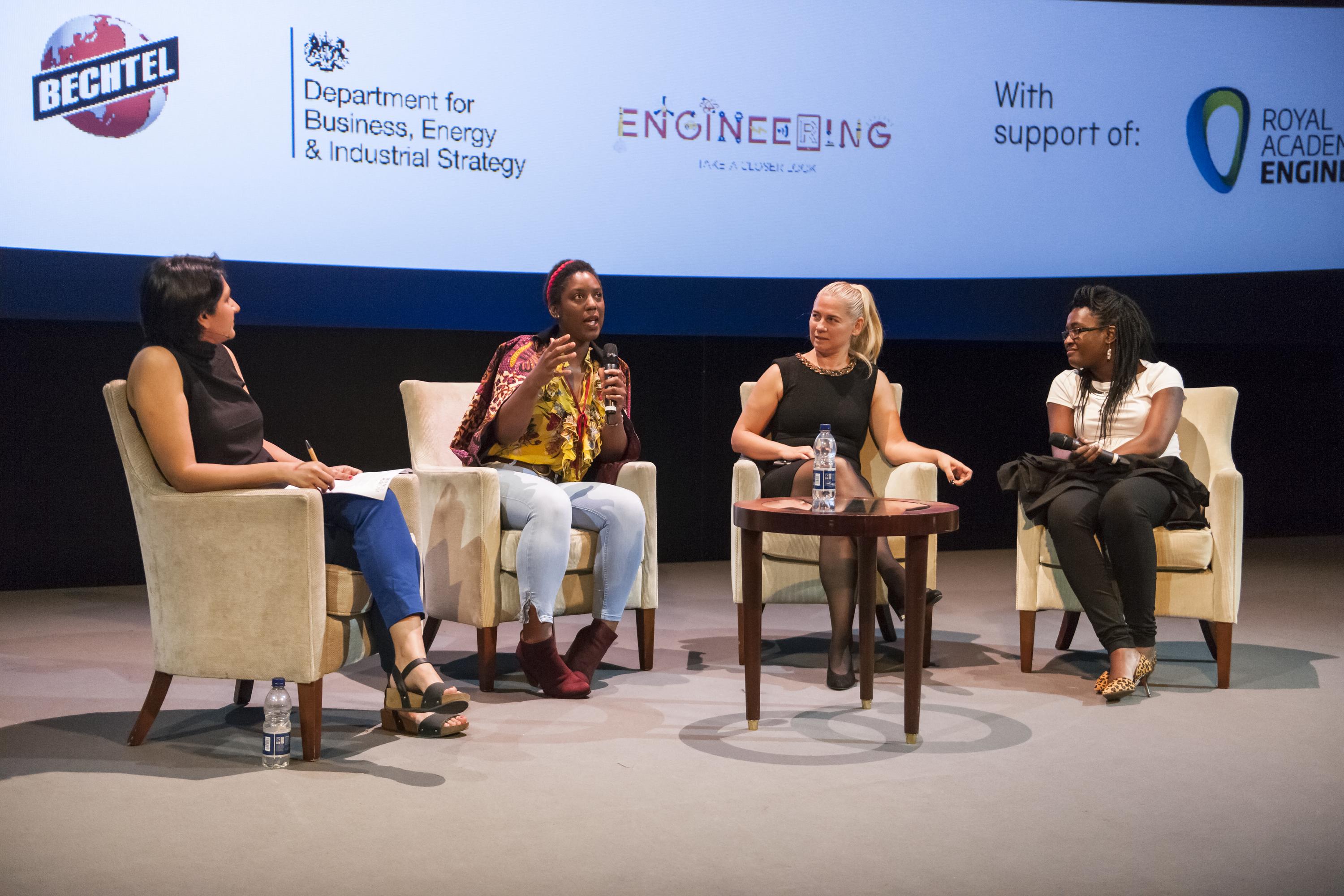Engineering whizz Shuri, aka Princess of the fictitious African nation of Wakanda, was the key character at a screening of Marvel’s record-breaking blockbuster film Black Panther at the Science Museum last week.
Over 400 people gathered at the IMAX Theatre to see the film and join a panel of top female engineers to discuss how close real-life tech is to the world of Marvel and whether big screen representation can really influence young people’s career choices.

This special event, held on the evening of International Women in Engineering Day (INWED18) on 23 June, rounded off a day of engineering activities across the Museum, from chemical engineered glow in the dark plants to a pipeline inspection gauge or PIG – like the one made famous by Pierce Brosnan’s James Bond when he used a PIG to escape down a Russian oil pipeline in The World is not Enough. In the spirit of the day, all the activities at the festival were hosted by female engineers to celebrate the contribution that engineers make to our everyday lives.
Over 4,000 people attended the Women in Engineering family festival, which was part of the Museum’s contribution to the Year of Engineering, a government campaign throughout 2018 that aims to give thousands of young people aged 7 to 16 direct and inspiring experiences of engineering, challenging traditional perceptions and tackling a lack of diversity in the profession.
By bringing young people from all backgrounds face to face with engineering role models, the initiative sets out to widen the pool of young people who enter the profession. Only 12% of UK engineers are women and 7.8% are from black and minority ethnic backgrounds – led by the Royal Academy of Engineering, the profession is working hard to change perceptions of engineering, including through a new digital campaign called This is Engineering that profiles real young engineering heroes in a series of short films.
In Black Panther, Shuri – played by the British actress Letitia Wright – spearheads Wakanda’s research programme in state-of-the-art laboratories and leads the development of amazing new technology using the unique properties of Vibranium, a mysterious metal found only in Wakanda. She oversees an extensive Vibranium mining operation and has used it to create super-strength shielding, space ships and maglev trains – and is also an expert in medical engineering. She is the younger sister of the King of Wakanda (the superhero Black Panther) and is a fearsome warrior in her own right.

Before the film, writer and broadcaster Angela Saini, author of Inferior: how science got women wrong, asked our panel of real world engineers to discuss the impact of role models like Shuri in films. Black Panther has broken box office records, becoming the highest grossing superhero film ever released in the US and the first superhero film to field an almost entirely black cast. The silver screen effect is real, the panel decided, reflecting on how archery had become far more popular after the Hunger Games trilogy, Jurassic Park inspired new palaeontologists and the Indiana Jones series triggered a rise in applications to study archaeology.
Yewande Akinola, an engineer working at construction giant Laing O’Rourke, said: ‘Shuri is my favourite Marvel character and a fantastic role model for young girls who might be wondering if they could work with the cool tech that she designs. My message to them is Yes! It could be you – you were all born with the ability to be an engineer!’

Dr Nike Foyalan, an Associate Director at engineering consultancy WSP and Chair of the Association of Black and Minority Ethnic Engineers, said: ‘Companies should concentrate on recruiting the best teams possible, with a diversity of backgrounds represented. UK engineering is facing serious skills shortages, and addressing diversity and inclusion will not only help bridge this gap, it will also help ensure that the people who are designing and building the world around us are more reflective of our society.’
Maja Pantic, Professor of Affective and Behavioral Computing at Imperial College London, said her native Serbia has much higher rates of female participation in science, technology, engineering and mathematics than the UK, putting this down to differences in cultural heritage and beliefs. She encouraged girls to build their maths skills and not be put off when it seems difficult – “practice really does make perfect,” she said. Encouragingly, maths is now the most popular subject for UK A level students and 40% of maths students are female.
The Science Museum Group will be hosting a range of special engineering events, from an engineering themed Lates and exhibition at the Science Museum, to year-round engineering-themed events at the Museum of Science and Industry and the National Railway Museum.
This is in addition to engineering themed events at the Manchester Science Festival supported by the Museum of Science and Industry and Bradford Science Festival supported by the National Science and Media Museum.
There will also be show-days for schools across all the Museums in the Group during 2018 in support of the Year of Engineering.
Jane Sutton is the Head of Media and Engagement at the Royal Academy of Engineering